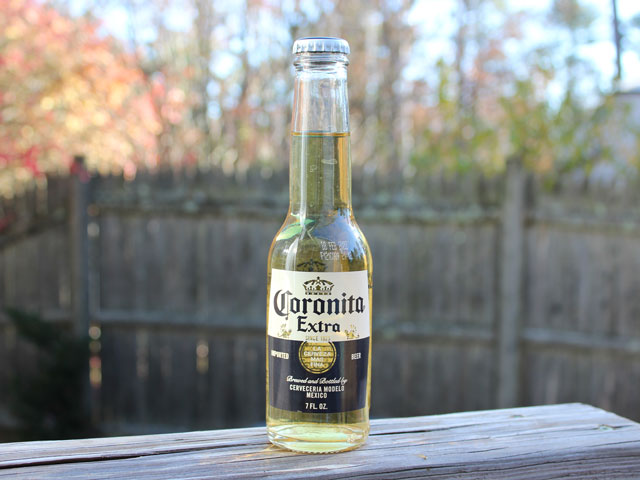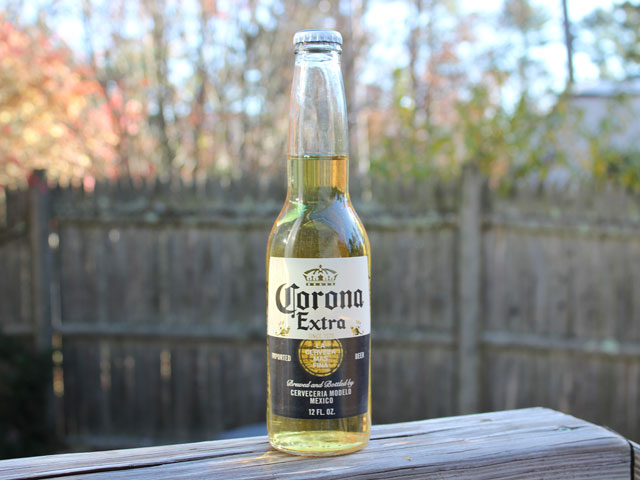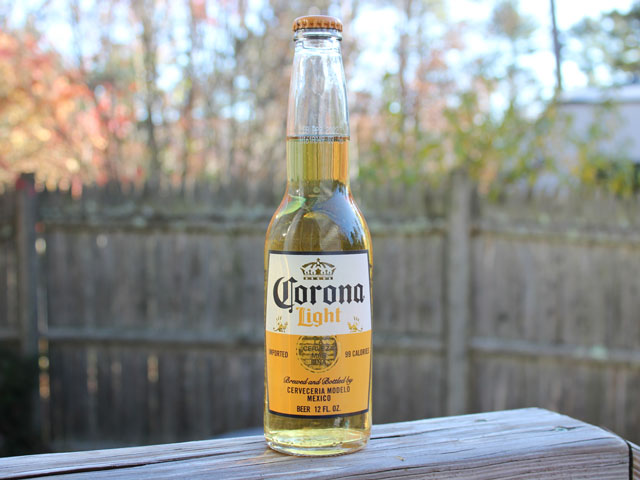Coronita vs. Corona Beer
Corona beer is a renowned brand that nearly any bartender will recognize across the globe (except Spain—more on that soon). To a lesser extent, many people are also familiar with Coronita beer.
Written by CraftJack | Updated | 9 min read
Interesting Tools
- Beer BrüMate Hopsulator
- Brewing Northern Brewer Beer Making Kit
- Spirit Crystal Whiskey Glasses
- Wine Wine Decanter/Aerator

Let’s start with the obvious: Coronita beer is a brand of Corona. Same way that Heineken 0.0 is a brand of Heineken.
But what about the differences between Coronita and Corona? You might be wondering what differentiates these similarly named beers in their alcohol content and flavor. Plus, can you drink Coronita with lime?
We’ll explain the answers to all these questions and more. So, grab a beer (if not Corona, then a Mexican Lager should do) and settle in for this read, because we think you’ll be surprised by some of the fascinating facts we’ll be sharing with you here.

What is Corona Beer?
Corona beer is a pale lager originating in Mexico and beloved across the globe. It has a dry, slightly sweet taste - word to the wise, Corona Extra, Coronita Light, Corona Premier, etc. are not gluten free beers, so beware.
Some people believe that the reason it became so popular to drink Corona with lime is that the acidity helps cut some of the beer’s sugary flavor. We’ll explore other theories about how limes became a popular addition to Corona shortly.
Among the many reasons that people love Corona is because it doesn’t leave a bitter aftertaste in the mouth. Furthermore, it has a distinct flavor from many beers and has a slightly fruity aroma. There aren’t loads of ingredients in this Mexican beer, making it a great fit for people looking to keep their diet more natural. Corona’s ingredients include:
- Barley malt
- Corn
- Hops
- Yeast
- Ascorbic acid
- Propylene glycol alginate
In addition to the traditional Corona Extra beer, Grupo Modelo, and by ownership, Anheuser-Busch InBev, expanded its brand to include several other spin-offs. For example, the Corona Light and Corona Premier options are ideal for people watching their calorie and carbohydrate intakes. Despite its name, the Premier has fewer calories and carbs than the Light version. However, you’ll still get to enjoy the same alcohol content regardless of which one you choose.

Corona also has their Corona Refresca line, which is a malt that contains several fruity flavors, including coconut lime and passionfruit lime. Among the many theories of why lime always goes with Corona, a popular one is because Corona’s see-through glass bottles make them susceptible to sun destruction, and the lime helps reduce the altered taste that sunlight causes. Could be real, could be hearsay, only scientists know that stuff, Am-I-Rite?!
History of Corona Extra
Corona Extra is the original Corona beer, having gotten its start in Mexico City in 1925. You don’t need us to tell you that Corona has become one of the most widely known beers in the world, we are well aware. And, in just 3 years time, they will be celebrating their 100th anniversary.
However, you may not know that it's manufactured by the Mexican brewery, Grupo Modelo, but owned by AB InBev, a Belgian company. You know AB InBev as the brewers of a variety of "heavy" pilsners and light beers, including Budweiser, Bud Light, Bud Zero, Bud Light Seltzer Nog, etc. - Wait, you didn't know Bud Light made an Egg Nog flavored Seltzer? They do, they sure do.
Anyway, in 1998, Corona Extra became the best-selling imported beer. It continues to claim that title today, which is no doubt in part thanks to its excellent marketing campaign. Due to its ever-present marketing, people often associate the beer with lime wedges and summer days on the beach. In fact, the 2010s amplified this perception with Corona adopting the saying, “Find your beach.” If you're gonna find your beach, be responsible and follow the laws. Plus, don't leave your empty 12 oz bottles at the beach, it's trash, they may break, and people walk barefoot. In fact, put your expired cervezas back in the coolers you brought them in.
Recently the COVID-19 coronavirus pandemic was an unfortunate irony for Corona, as surveys showed that a portion of the beer-drinking population didn’t want to purchase from the Corona brand. We'll go on record as saying that if you put a Corona Extra or Coronita in front of a beer drinker during the pandemic, they drank it, but no one wanted to be seen buying a 12-pack or two.
The pandemic aside, Corona Extra lovers will be glad to know that despite some shortages during the pandemic, they can still find their beloved lager beer at stores throughout the world.
What is Coronita Beer?
If you know some Spanish, you might recognize that the “ita” in “Coronita” means little. And so, Coronita beer is just that in most parts of the world - a mini version of Corona beer.
How mini, you ask? The Coronita beer comes in a bottle size of just 210 milliliters (ml) compared to Corona Extra’s 330 ml bottle.
There’s one caveat to this Coronita rule, though. In Spain, Coronita refers to all types of Corona beer, regardless of the bottle size. That’s because Spain founded their version of Corona in 1907, just 18 years before Corona Extra.
The Spanish version of Corona is from Bodegas Torres, a well-known winemaker in the country. So, if you visit Spain and want a Corona Extra, make sure to ask for a “Coronita” to avoid the surprise of the bartender pouring you a glass of wine.
Luckily, it’s still easy to spot the Corona beer brand in Spain; they use Corona Extra’s traditional packaging on their Spanish-style Coronita bottles. As a final fun fact to share when you’re drinking with your friends, “Coronita” means “little crown” in Spanish. Now Corona’s logo makes sense, doesn’t it?
Coronita vs. Corona
When comparing the similarities and differences of Coronita vs. Corona, size matters. Corona Extra has an additional 120 milliliters of alcohol on Coronita. According to Grupo Modelo and plenty of willing taste testers, size is the only difference between these Mexican lagers. Coronita beer contains the same ingredients and alcohol percentage as Corona Extra. At 4.6% ABV, you're not seeing the difference in booziness that moving from an IPA to a Double IPA has.
As a result, you can expect the same crisp, light flavor that you seek from Corona in Coronitas. The smooth drink pairs beautifully with several types of foods, including:
- Chicken Caesar Salads
- Fish Tacos
- Salty snacks such as Chips, Peanuts and Popcorn
Although the physical makeup of Corona Extra and Coronita is the same, how users treat them in terms of using lime wedges is different. If you drink a Corona Extra outside of Mexico, you can almost always assume that it’ll come with lime. However, Coronitas rarely come accompanied by limes. Even more interesting, drinking Corona with a lime isn’t a Mexican tradition; if you walk into a local bar in Mexico, it’s unlikely the bartender will offer you lime with your drink. However, in more touristy parts of Mexico, you can assume that your Corona Extra will.
Needless to say, whether you enjoy the lime flavor taking away some of the oxidized taste in your beer or you want to use the lime to keep flies out of your bottle (pro move right there), having easy access to a lime wedge doesn't hurt.

Similarities of Corona and Coronita:
- Pale lager
- Balanced, malt flavor
- Same ingredients
- Approximately 4.6% alcohol by volume
Notable differences between Coronita and Corona:
- Coronita comes in a 7 fl oz / 210 ml bottle and Corona in a 12 fl oz / 330 ml bottle
- In Spain, they call any sized Corona bottle “Coronita”
- People only use limes in Coronas
Coronarita? Never heard of it ...
A Coronarita is the best of both worlds when you think of Mexico—it's a cocktail involving Coronita beer and a margarita. If you haven’t tried a Coronarita, head to your nearest Mexican restaurant because it’s quite a treat. It involves a bartender tipping a Coronita beer bottle upside down into a margarita. Ok, ok, it's exactly as it sounds.
Alternatively, grab some tequila and Coronita beer bottles and try your hand at making a Coronarita at home. To do so, prepare your margarita as you normally would. Then, attach a margarita clip to the side of a standard wide-rimmed margarita glass. If you're looking for a clip, you could always try the Corona Extra Coronarita Drink Clips.
You’ll then need to tip your Coronita beer bottle upside down into the clip, which will support the bottle as it sticks out of the glass. As you begin nursing this delicious drink, the beer will gradually flow into the margarita, creating a one-of-a-kind flavor.
If you’re concerned about the beer flowing into your margarita too quickly, science will put your mind at ease. Air pressure inside of the bottle causes the beer to maintain a gradual flow into your glass. Plus, since Coronaritas come frozen, there’s only so much wiggle room for the beer to seep out.
You might be wondering—can you use a Corona Extra beer bottle to make a Coronarita? No, you can’t. If you guessed that it’s because the beer bottle is too large, you’re spot on. It would be a shame to lose your precious margarita and beer because of a top-heavy situation of you trying to attach a Corona Extra beer bottle to the margarita clip!
Interestingly enough, Grupo Modelo also does the same thing with Modelo Especial, producing Modelo Especial and Modelito, a smaller, 7oz bottle format of the same beer.
What else could you make with a Coronita?
You could also try using a Blue Moon to make an interesting margarita. Check out the Blue Moon Margarita Recipe. You could also make an interesting shandy with Ginger Ale and Coronitas, especially if you use the snack size cans of Ginger Ale.
Grupo Modelo vs Constellation Brands
One thing that escapes us is when ownership of Corona beer changed over. Or, is it a distribution issue. You see, AB InBev took Constellation Brands to court over some infringement issues over one's alcoholic beverages.
Coronita FAQs
How much alcohol is in a Coronita?
A Coronita is 4.6% ABV. It is the same as a Corona Extra. There are 0g of fat per 7oz serving. There are 81 calories per 7oz serving in a Coronita Extra.
What kind of beer is Coronita?
Coronita is a Pale Lager.
What are the little Corona bottles called?
Coronitas.
Is there tequila in Corona or Coronita?
No. You can add tequila, but it is not added in the brewing process.
Do Coronitas get you drunk?
Yes. How your body reacts to alcohol and how many you drink will determine how drunk you get. If there is alcohol in a beverage, it will (eventually) get you drunk.
How much do Coronita Extra beers cost?
According to Walmart.com, you can buy Corona Extra Coronita Mexican Lager Beer for $6.98 per 6 pack. That's a lot of money per ounce for these non-malted cereal hops in a tiny bottle. Then again, it is La Cerveza Mas Fina after all. You can thank Crown Imports in Chicago, IL for bringing this beer stateside. And once you "Find Your Beach", you can thank your sister-in-law for bringing the Corona!
Wrapping Up
We know that it can be hard to picture wanting a smaller version of Corona Extra when you’re basking at the beach. But there are moments when the smaller Coronita bottles come in handy, especially if you want to indulge in a Coronarita.
Regardless of the bottle size you choose, by drinking a Corona Extra or Coronita, you can be sure that you’ll be receiving the same flavor and alcohol percentage of the Corona brand you know and love.
And if you’re lucky enough to visit Spain, you now know that asking for a Corona will land you a cup of local wine. So, when in the land of tapas, always ask for a Coronita.
